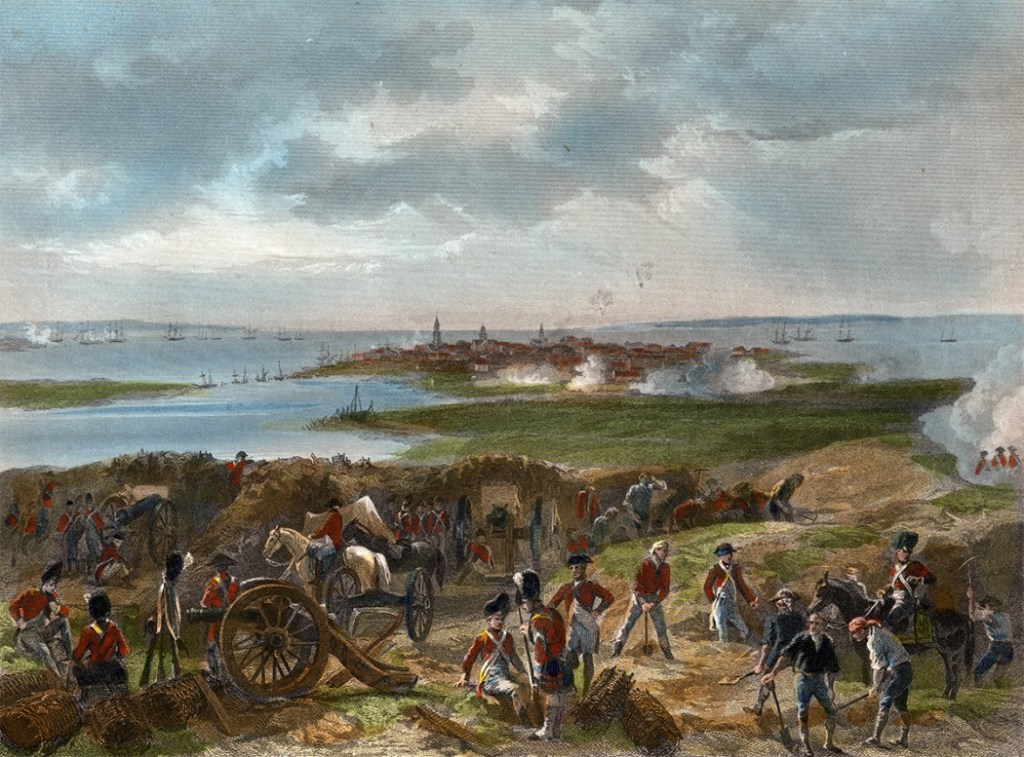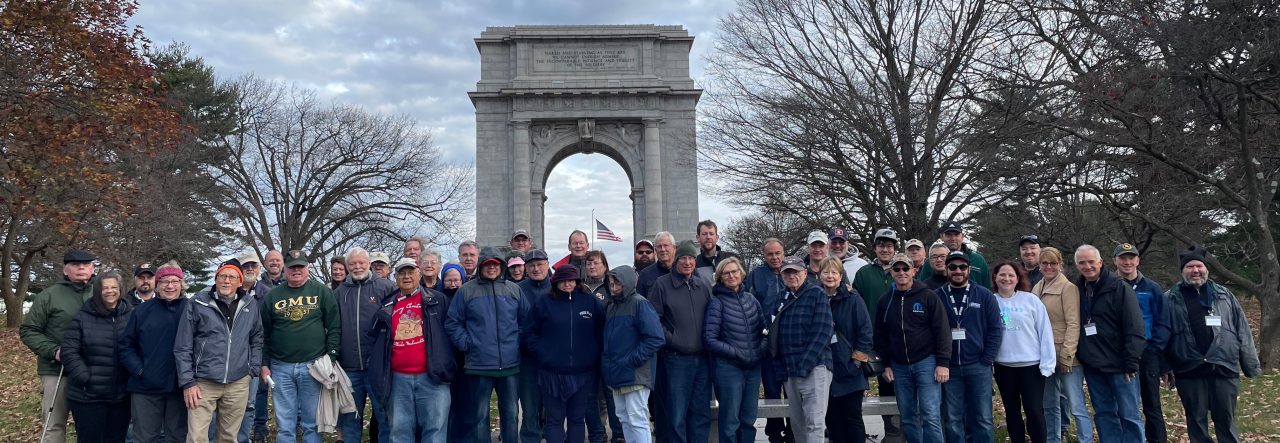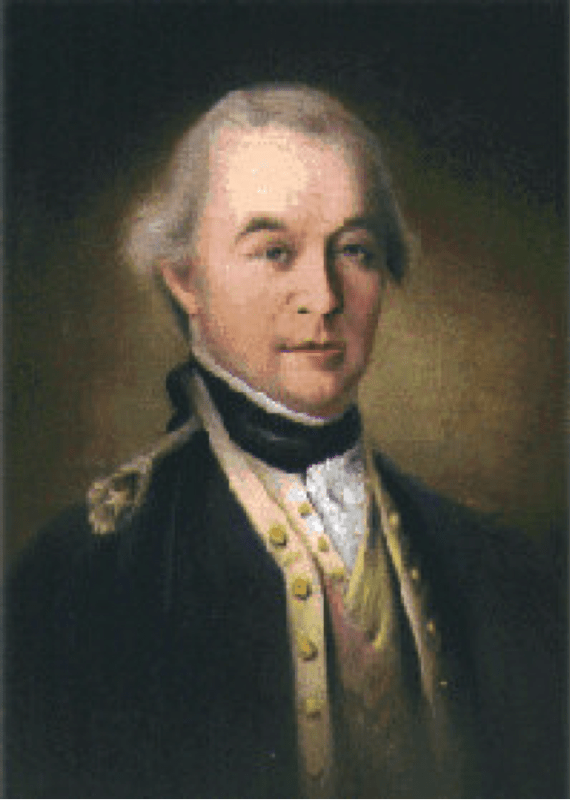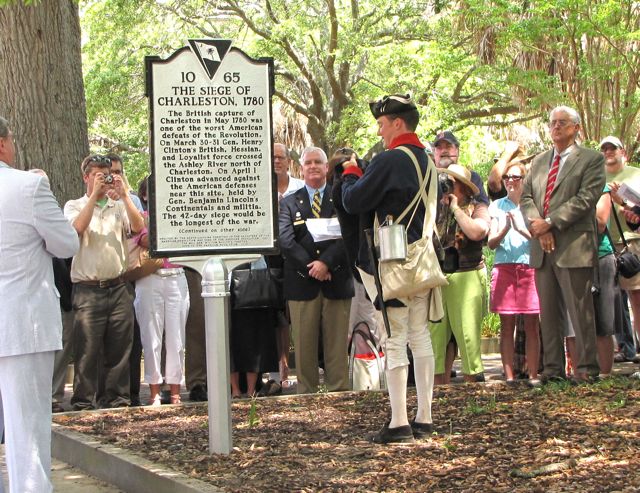On April 7, 1780, 750 Virginia soldiers completed a nearly 800 mile trek from Morristown, New Jersey to Charleston, South Carolina, only to be captured and sent to prison ships in Charleston harbor.
In November and December of 1779, both British General Sir Henry Clinton in New York City and American General George Washington in Morristown, New Jersey, began to turn their eyes south. A combined Franco-American force under the command of General Benjamin Lincoln and Count d’Estaing had made a bloody assault to try and capture the Southern city of Savannah to no avail. The Count d’Estaing took his French force and returned to the Caribbean, and Lincoln took his demoralized American army back to Charleston, South Carolina. With only about 2,400 Continentals and militia, Lincoln’s army (and the city of Charleston) looked like a ripe target for Clinton, who had been part of the botched attempt to capture that city in June of 1776.

Clinton made the bold decision to take about 9,000 men from his army in New York City and sail them down to South Carolina to make an attempt to capture Charleston and Lincoln’s army.
Washington, learning that Clinton was preparing part of his army to disembark from New York City, began to direct efforts to help defend the city of Charleston. Washington was repeatedly receiving letters requesting troops and supplies from Lincoln and Congress. In November, Washington dispatched the North Carolina Continental line regiments (almost 1,000 men) to reinforce Lincoln, but after talking to his former aide-de-camp Lt. Col. John Laurens, who visited him personally after fighting at Savannah, Washington understood how desperate a situation Lincoln was in. Congress and Washington made the bold decision to send the entire Virginia Continental line regiments (almost 2,500 men) to join Lincoln’s army that December. Washington parted with these venerable veteran soldiers even though it weakened his position guarding against the main British Army at New York City.
Washington hoped these men would be able to travel by sea to South Carolina, to avoid the hardships of the journey and the temptations of desertions as they marched through their home state. However, the Royal Navy’s command of the seas made this impossible. These intrepid men would have to march overland all the way from Morristown, New Jersey to Charleston, a journey of nearly 800 miles that would take more than four months. Additionally they moved out just as the worst winter of the war hit the mid-Atlantic.
The Virginians, under the command of General William Woodford, made it to Petersburg, Virginia by early March of 1780. At that time, the British army and navy was closing in on Lincoln and Charleston. The North Carolina Continentals arrived in Charleston at that time, but Lincoln’s force still numbered only around 4,300 men. They were earnestly fortifiying the town to try and hold off Clinton’s army. Lincoln wrote to Woodford to “request that you would leave your waggons & spare Baggage & hasten your march to this Town. your speedy arrival is most ardently wished for.” Thus on March 8, Woodford began a forced march of his men south.
The numbers of men under his command dropped greatly due to the fact that some of the Virginians enlistments expired as they were marching south. There were also a great number of desertions and deaths to sickness. Regardless, they pushed on. In less than thirty days, the Virginians marched 505 miles from Petersburg to Charleston, averaging about 20 miles a day. Woodford wrote to Washington that “I hope we shall still be there in time to be useful.”
On April 7, the more than 750 Virginians arrived on the banks of the Cooper River. The British had nearly encircled the city of Charleston, but the Cooper River was still open. The Virginians boarded boats and sailed past the British Army and landed at Gadsden’s Wharf in the city of Charleston at 2 p.m. to the hearty cheers of the people and defenders of the city. Woodford noted that “The Garrison appear in high Spirits, & our arrival seem’d to give them fresh confidence.”
One Patriot in the Charleston defenses was impressed with the Virginians noting that they “wear the appearance of, what they are in reality, hardy veterans.” The Patriot defenders fired their cannons in salute and St. Michael’s Church bells pealed all day. Among these vaunted Continentals were veterans of the Battles of New York, Trenton, Princeton, Brandywine, Germantown and Monmouth. The veteran soldiers marched straight into the American defenses. With these reinforcements, Lincoln now had about 5,600 men, both Continental and militia to defend the town. The reinforcements gave the city some much needed hope.
The British were despondent at the reinforcement. They realized that as long as the Cooper River area was open, more reinforcements would be able to make it in. The British heard the loud celebrations and understood that regular soldiers were worth almost twice as much when defending positions behind fortifications. However, the British commander, Clinton, was not upset at the reinforcement, as he hoped this would simply make his conquest that much larger. He was right.
The following day, April 8, the Royal Navy sailed past the venerable Fort Moultrie and now commanded Charleston harbor. After more than a month of maneuvering and fighting, on May 12, Lincoln surrendered the city and his army, including the 750 Virginians, to the British. It was the largest defeat of the Revolution for the United States.
The Continental officers and soldiers were made prisoners of war. Most of the officers who were made prisoner generally received decent treatment, though some, such as William Woodford, died of disease while being held by the British. However, the common soldiers suffered intensely, as they were placed on prison ships in Charleston harbor. The conditions on these vessels were miserable with rampant sickness, disease and malnutrition. Over the course of more than a year, almost 800 men would die on these ships in Charleston harbor, martyrs to the cause of American independence. Sadly, for the Virginians, they sped quickly to the city only to meet their demise.
Today at Charleston, only one historic marker interprets the 1780 siege of Charleston and nothing notes or marks the sacrifice of Woodford’s Virginians or the other Patriots who died as prisoners of the British Army. Hopefully, one day these men’s sacrifice will be remembered and honored.



Any monuments still standing to these actions?
LikeLike
There is only one marker to the Siege of Charleston, but nothing specifically for Woodford’s Virginians.
LikeLike
Reblogged this on Dave Loves History.
LikeLike
Agree! Let’s hope you are right.
LikeLike
Honor Woodford and his men with a marker or monument. They are SO deserving of one, and it’s WAY past due.
LikeLike
A sad conclusion to many great military careers.
LikeLike
Pingback: “The Severest Blow We Ever Received”: The Fall of Charleston, South Carolina, May 12, 1780 | Emerging Revolutionary War Era
Pingback: Battlefield Glory to Prison Ship: Brigadier General William Woodford – Revolutionary War Journal
Pingback: Battle of Moncks Corner – Revolutionary War Journal
Pingback: The Virginians’ 800-Mile March to Save Charleston – Revolutionary War Journal